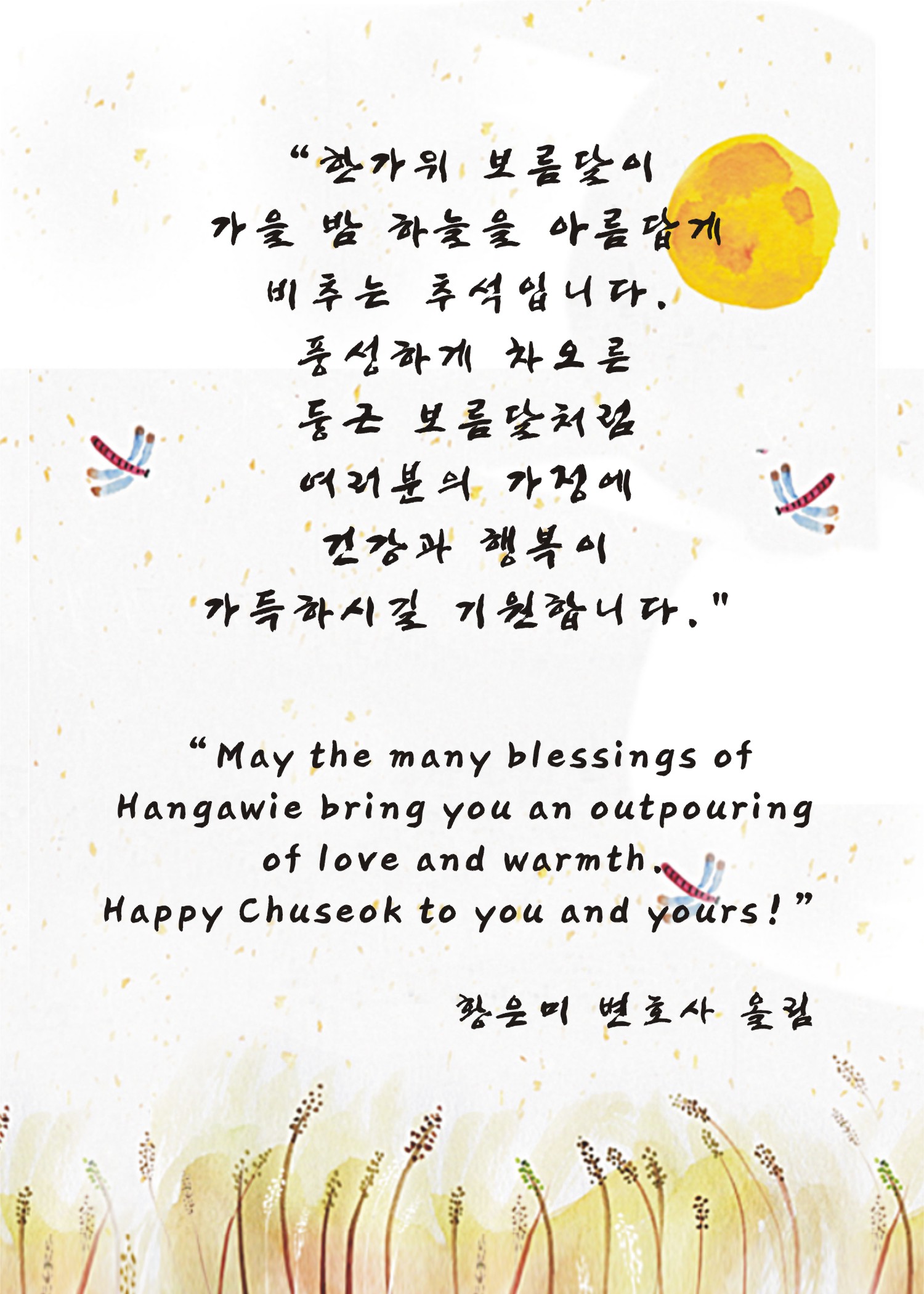
Maggiano Law Celebrates Chuseok
Chuseok, also known as Korean Thanksgiving Day, is one of the most important and festive holidays of the year for Koreans. This year, Chuseok falls on Friday, September 13th, but the holiday period actually lasts for three days in total – including the day before and after Chuseok.
Maggiano’s staff celebrated with an in office lunch.
See below for a description of what was served and the history behind each dish. To learn more about Chuseok read our blog post. As Koreans do on Chuseok, Maggiano, DiGirolamo, and Lizzi P.C. would also give thanks for serving the needs of the injured this year and wish for another good year helping those that have suffered injury and pain due to the negligence of others.
송편
Songpyeon is one of the quintessential dishes that appear at every Chuseok gathering. It is a type of rice cake, made of rice dough filled with beans, sesame seeds or other nutritious ingredients and then steamed. The rice cakes get their name and signature scent from being steamed over a bed of pine needles (“song” means pine in Korean). The shape and filling of songpyeon vary according to regions but the most common ones are bite-sized and shaped like a half-moon.
불고기
Bulgogi is a dish loved by Koreans. Bul means fire and gogi means meat in Korean. This dish made of thinly sliced meat and vegetables mixed in a sweet marinade is the perfect choice for people who can’t handle spicy foods. It is excellent in both taste and nutrition as it makes a good combination with fresh vegetables such as thinly sliced green onions
잡채
Japchae is yet another dish that is often present during festive days in Korea. Japchae is a compound word of the Korean words “jap” meaning mix, and “chae,” from “chaeso” which means vegetable. Japchae is generally prepared with dangmyeon, a type of glass noodles made from sweet potato starch, topped with assorted vegetables, meat, and mushrooms, and seasoned with soy sauce and sesame oil. Japchae may seem like a relatively easy dish to cook, but it requires a lot of effort. Each of the vegetable ingredients must be sliced into small pieces and lightly cooked, either boiled or stir-fried, separately before being stir-fried together one last time. It is a long process but you’ll know it’s worth it when you get to taste the harmony of flavors each ingredient brings.
강정
Dak Gangjeong is made by deep-frying chicken coated with flour. The fried chicken is then smothered in a sweet yet spicy sauce that has been boiled down.The dak gangjeong is popular among all for its sweet and spicy taste, and for retaining its crisp and chewy texture despite being served cold.
김밥
Gimbap is a Korean dish made from steamed rice and other ingredients that are rolled in gim—dried sheets of laver– and served in bite-sized slices.[1] Rice can be seasoned simply with salt or a mixed seasoning of vinegar and salt. The rice is then placed on a sheet of dried seaweed. Strips of eggs, fish cake, carrot, seasoned spinach, pickled radish or other ingredients are then placed in the middle to be rolled together into a cylinder shape. The roll is then cut into bite-sized pieces. Due to its portability gimbap is often part of a packed meal, or dosirak, to be eaten at picnics and outdoor events, and can serve as a light lunch along with danmuji (yellow pickled radish) and kimchi. Gimbap is easy to eat and is good to eat outside because the bowl does not get dirty even after eating all the Gimbap. It is a popular take-out food in South Korea and abroad,[2] and is known as a convenient food because of its portability. The taste can be quite versatile, depending on the ingredients. Gimbap is a perfect meal option for when you’re on the go!


















